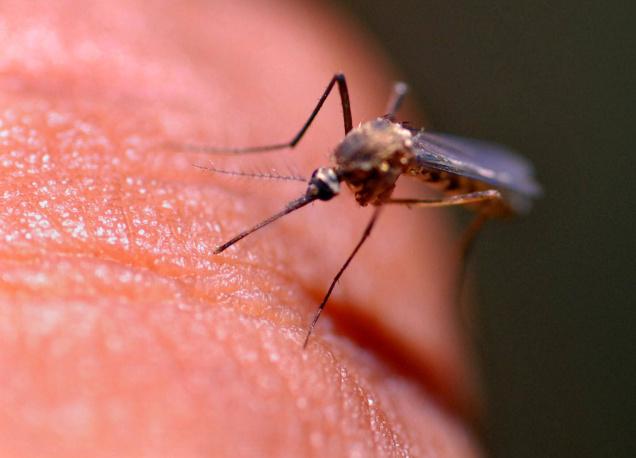
Summer is now well and truly underway. So it’s a safe bet that, at some point during all of the festivities, you’ve been bitten by a mosquito. It happens to people all of the time; however, very few stop to think about how this process actually works. Sure, we all know the basics, and it’s really amazing when you think about it. One of these pesky, light-weight creatures can land on you, break through a thin layer of your skin, and suck your blood—and all without you feeling anything more than a slightly annoying sensation. Of course, once they have truly pierced your skin, they can feel tremendously annoying.
In this freakishly skin-crawling video, captured by youtube’s Hans Johansson, we get an up-close view of this process in action. Johansson reveals what it looks like when several mosquitoes are feasting on a human, and he shows it in incredible detail. Below the video, we’e detailed some of the most interesting aspects related to how mosquitoes work.
WATCH: Mosquitoes Bite and Suck Blood in HD
Some “Fun” Facts About Mosquitoes:
- Fossil records show that mosquitoes were around more than 30 million years ago.
- Forget snakes, spiders, or sharks. Mosquitoes are the most dangerous and deadly creatures on Earth. This is based on the fact that mosquitoes help propagate a whole host of nefarious diseases. They don’t just cause things like malaria or the West Nile virus. They also cause yellow fever, dengue fever (which can lead to dengue hemorrhagic fever), and encephalitis. An estimated 725,000 people succumb to mosquito-transmitted diseases each year (that number is more than all of the other leading deadly creatures combined).
- Along with the keen ability to suck your blood undetected, mosquitoes are also equipped with some extremely interesting senses, which include visual sensors (they help the insects differentiate between living moving things and stationary objects with no blood), heat sensors (that help them zero-in on warm-blooded mammals), and chemical sensors (which help them pick up on gases and other substances generally associated with living creatures, or the byproducts of breathing). This partially explains why some people are more susceptible to mosquito bites than others.
- Using their senses, mosquitoes can even detect carbon dioxide from 75 feet away. That’s kind of like smelling a fart from across the street, in human terms.
- While unimaginably small compared to humans, mosquitoes are hard workers. Each second, they ‘pump” their wings between 300 to 600 times. Despite this fact, they can only travel between one and 1.5 miles per hour (and you thought your timed mile run in high school was bad); however, on the plus side, they do live long lives (for insects at least). Adults can live between 5 and 6 months.
- Only female mosquitoes drink blood. The males prefer something much sweeter.
- In order to penetrate the skin, mosquitoes have something called a “labrum.” This hollow, strip-like part has six different components. This system helps them insert their mouthparts,which are thinner than a strand of human hair, into the skin with relative ease.
- Scientists have devised a nearly pain-free hypodermic needle based on the makeup of the labrum.
- Mosquito bites start to itch, not because of the bites themselves, but because our bodies are responding to bacteria in the saliva left behind after they penetrate our skin. Our immune systems start producing histamines that travel to the bite spot, which causes the skin to inflame and become itchy.
- In 2013, French scientists captured an incredible video of a mosquito in action. It indicated that there might be more to their bite mechanics than previously thought. Instead of merely inserting the labrum into the skin and drawing blood. they might actually dig around until they find a suitable spot (ideally, a blood vessel). Furthermore, they can position their incredibly flexible labrum in various angles for greater impact.
Enjoyed this article? Believe it or not, there are far more horrifying things, like this freaking mosquito tornado!